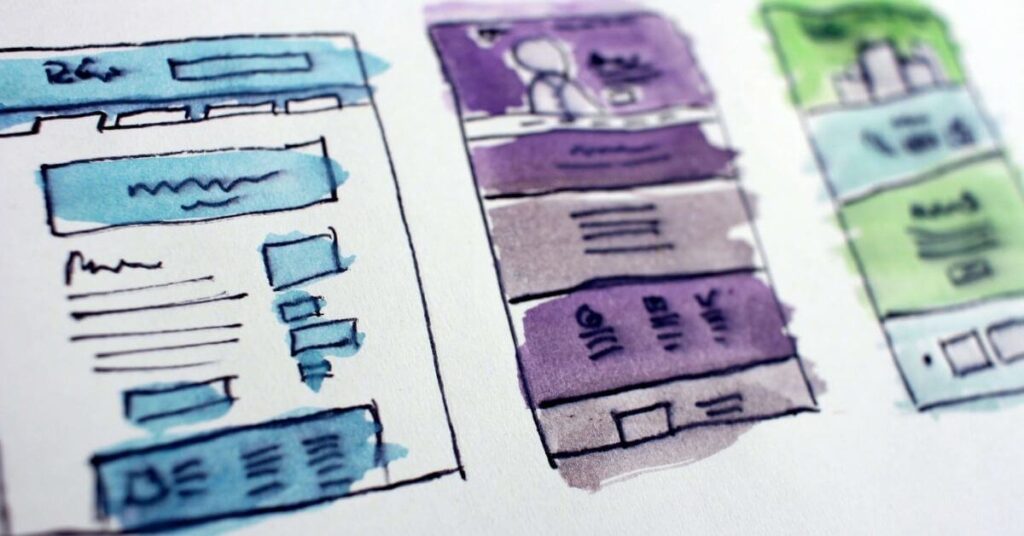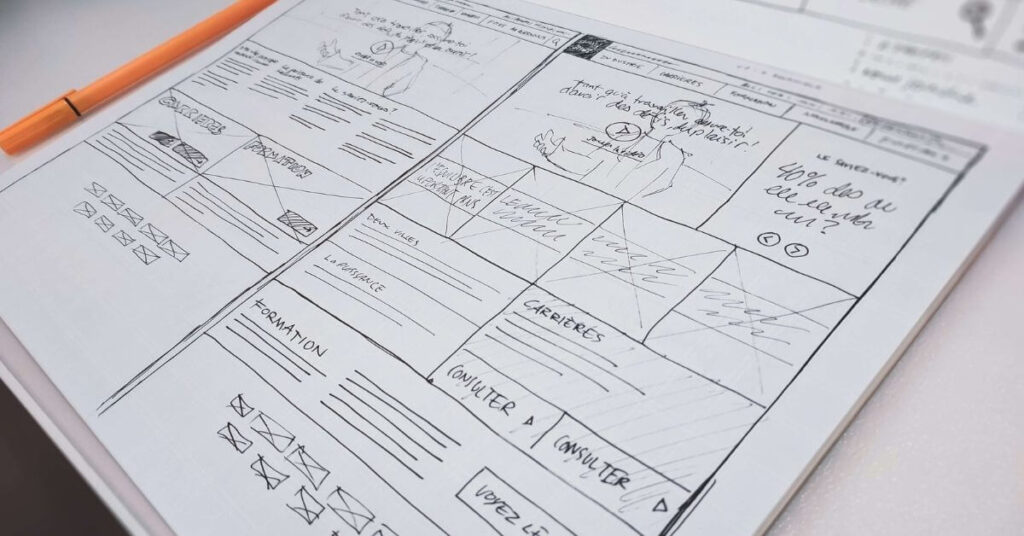Web design plays a huge part in keeping your audience on your website and turning them into leads or customers. If you want your website to actually help grow your business, here are some things you need to consider.
Familiar web design creates instant connections with your target audience

Before you start designing your website, you should have identified who your target audience is and researched how they behave online. (If you haven’t yet, check out our buyer persona template).
Using this information you can understand what other websites they interact with and what styles they respond to. By taking design cues that they are already familiar with, your audience will instantly feel comfortable using your website from the first time they visit. This means they’ll easily be able to find what they’re after and will be more likely to convert.
E.g. if your target audience are frequent online retail shoppers they’ll find it easier to navigate your office supplies website if your products are displayed in a similar way to online stores like ASOS and New Look. However, if you design your website similar to a corporate printer manufacturer’s website your target audience will have to spend longer getting to grips with where everything is on your website – and if it’s too unfamiliar, they may leave altogether.
Don’t forget that people will make snap-judgements about your brand from the minute they see your website. By emulating brands you know they already like, you can immediately position yourself as a brand they should be interested in.
Navigation and CTAs make the user journey easy
Now, even if you don’t mimic the design of your audience’s favourite websites you can still help them find everything on your website with a well-thought out navigation and sensible Calls-To-Action (CTAs).
A good navigation incorporated into your web design takes users on a very natural journey throughout the site. Again, research into your buyer personas will help you understand exactly what they need from you – do they need menu items to be broken down into very specific options (e.g. “Staplers”, “Sticky Notes” and “Folders”) or will they prefer broader categories that can then be filtered on the page itself (e.g. “Small Office Supplies”)?
Similarly, you want to ensure that you have CTAs in the appropriate places to maximise conversions – you don’t want pop-ups appearing at the wrong moment or for users to be ready to convert with no place to do so on that particular page.
Web design highlights your brand message
As mentioned earlier, people will make snap-judgements about your brand from their first visit to your website so you need to ensure you clearly convey who you are and what your business is about through brand assets (e.g. logos), colours and typography.
While researching other websites can be a good way to create an instant connection with your target audience you shouldn’t copy the design of another website – that’s just lazy. Your web design should be individual to your brand and help audiences distinguish your business from others. Think about how you can use your branding across the website e.g. through the shape of sections on your site or how pages transition to the next.
Aside from any fonts or colours used in your brand assets, you should also put thought into what message the colours and fonts used in your web design convey to your audience.
What messages do colours typically convey in web design?
- Blue – Productivity, Confidence, Focus
- Yellow – Optimism, Creativity
- Red – Urgency, Efficiency, Energy
- Green – Calm, Alert, Peaceful
- White – Clean, Modern, Open
- Orange – Friendly, Cheerful, Successful
- Purple – Luxury, Wisdom, Loyalty
- Black – Control, Stability, Intellect
What messages do fonts convey in web design?
Choosing the right font makes all the difference in web design, different fonts give off different impressions and you want to make the right impression.
- Sans serif – informal, modern
- Serif – high end, traditional, formal
- Script – delicate, luxurious
- Slab serif – bold, confident
Imagery in web design tells a story

If a user on your website is going to convert to a customer, they need to understand why your business is relevant to them. While part of this will be down to your website copy – a much faster way for users to make the connection is to see their own story reflected in the website imagery.
Based on your buyer personas, you should understand who your customers are which means that you can create website imagery that matches the demographic characteristics and personal/business challenges that they’re facing – i.e. the story your customers want to see.
Read more about what imagery to use on your website
But it’s about more than simply selecting the right images for your audience. You need to incorporate imagery throughout your web design: where on the page should images come in; what size should the images be; how should the images be presented?
Similarly to having a well-planned navigation and CTA structure, how and where your images appear within your web design can make all the difference to the amount of conversions your website drives.
If your target persona is a female in their 20s working as an office administrator, seeing an image of a male in their 50s on a building site next to the selection of office supplies she’s looking at isn’t telling the story that these are the right products for her to buy right now.
Web design improves SEO
Search Engine Optimisation (SEO) is about more than putting keywords in the right place. Ultimately SEO is focused on providing a great user experience for visitors coming through search results – by being relevant, high-quality and speedy.
A well designed website will keep people on your site for longer and help them complete the task they set out to do – something that Google will recognise from the user’s behaviour. If Google identifies that users spend a long time on your website and don’t come back to the results to explore other options, they will determine that you provide a good user experience and rank you higher.
On the flip side, even with the best keyword optimisation in the world, if your website seems to provide a poor user experience Google will rank you lower in search results – making it harder for your target audience to find you in the first place.
Digital marketing activities often work to send users to our website which is where they will ultimately convert into a customer or lead. This means that a successful marketing funnel needs strong web design.
Great web design helps build relationships with users, conveys brand messages and even improves rankings on Google – while poor web design can result in a website that immediately turns off any traffic you’re lucky enough to get.
Want help designing a website that will resonate with your audience, generate traffic and convert visitors? Get in touch with us to find out more about our web design services.



